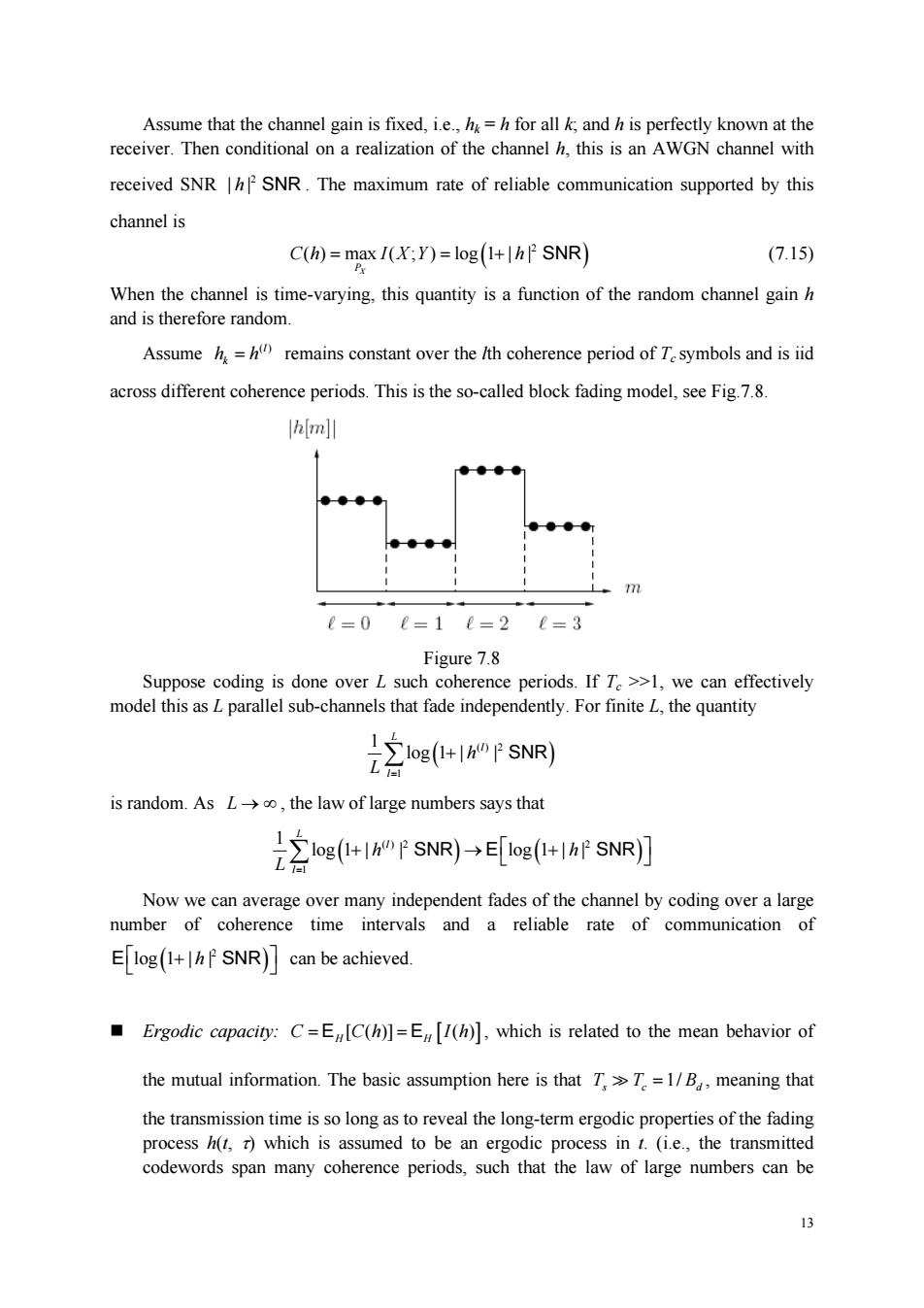正在加载图片...

Assume that the channel gain is fixed,i.e.,h=h for all k,and h is perfectly known at the receiver.Then conditional on a realization of the channel h,this is an AWGN channel with received SNRSNR.The maximum rate of reliable communication supported by this channel is C(h)=max /(X;Y)=log(1+h SNR) (7.15) When the channel is time-varying.this quantity is a function of the random channel gain and is therefore random. Assumehremains constant over the /th coherence period of Tsymbols and is iid across different coherence periods.This is the so-called block fading model,see Fig.7.8. .m 0=0e=10=2e=3 Figure 78 Suppose coding is done over L such eriods.If T,we can effectively model this asLparallel sub-channels that fade independently.For finite the quantity og(SNR) is random.AsL,the law of large numbers says that ee SN)→E[e1 IF NR)町 Now we can average over many independent fades of the channel by coding over a large number of coherence time intervals and a reliable rate of communication of E log(1+h SNR)can be achieved. Ergodic capacity:C=E[C(h)]=E[(h)].which is related to the mean behavior of the mutual information.The basic assumption here is that T,T=1/B,meaning that the transmission time is so long as to reveal the long-term ergodic properties of the fading process h(t,r)which is assumed to be an ergodic process in t.(i.e.,the transmitted codewords span many coherence periods,such that the law of large numbers can be 13 13 Assume that the channel gain is fixed, i.e., hk = h for all k; and h is perfectly known at the receiver. Then conditional on a realization of the channel h, this is an AWGN channel with received SNR 2 | | h SNR . The maximum rate of reliable communication supported by this channel is 2 ( ) max ( ; ) log 1 | | PX Ch I XY h SNR (7.15) When the channel is time-varying, this quantity is a function of the random channel gain h and is therefore random. Assume ( )l k h h remains constant over the lth coherence period of Tc symbols and is iid across different coherence periods. This is the so-called block fading model, see Fig.7.8. Figure 7.8 Suppose coding is done over L such coherence periods. If Tc >>1, we can effectively model this as L parallel sub-channels that fade independently. For finite L, the quantity () 2 1 1 log 1 | | L l l h L SNR is random. As L , the law of large numbers says that () 2 2 1 1 log 1 | | log 1 | | L l l h h L SNR E SNR Now we can average over many independent fades of the channel by coding over a large number of coherence time intervals and a reliable rate of communication of 2 log 1 | | h E SNR can be achieved. Ergodic capacity: C Ch Ih E E H H [ ( )] ( ) , which is related to the mean behavior of the mutual information. The basic assumption here is that 1/ TT B s c d , meaning that the transmission time is so long as to reveal the long-term ergodic properties of the fading process h(t, ) which is assumed to be an ergodic process in t. (i.e., the transmitted codewords span many coherence periods, such that the law of large numbers can be